Tennessee RiverLine helps cities reimagine waterfront access
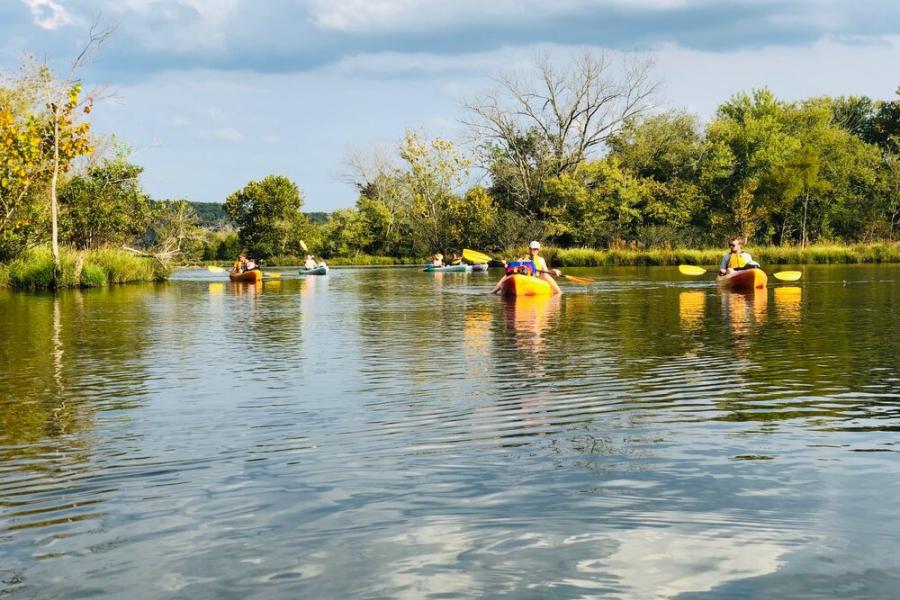
By KATE COIL
TT&C Assistant Editor

Municipalities along the Tennessee River are rethinking how they utilize this resource economically, recreationally, and ecologically as the first concepts are unveiled as part of the Tennessee RiverLine’s inaugural round of its community planning initiative.
The Tennessee RiverLine and its Tennessee RiverTowns program is an initiative of the University of Tennessee Extension in partnership with the University of Tennessee and Tennessee Valley Authority (TVA). The goal of the program is to create a continuous, multimodal system of both greenway and blueway trails along the Tennessee River from Knoxville to Kentucky – 652 miles.
By creating more recreation opportunities along the river, the aim is to boost the economies of cities along the river and encourage environmental conservation of the river as a local resource. In Tennessee, the municipalities of Clifton, Kingston, Saltillo, and Savannah are among the first to put this plan into practice.
Patrick Osborne, senior planning and design manager with the Tennessee RiverLine, said the two year-project was funded through a USDA Rural Placemaking Innovation Challenge grant, with support from the University of Tennessee and TVA allowing for both a public feedback and design phase.
“What we want to do is provide each community with a true sense of ownership and pride in the Tennessee River,” he said. “If we can get folks out – like we’ve seen in Chattanooga the past 15 to 20 years – engaging with the river and communities begin to make infrastructure investments, an economic piece comes along with it too. We look at this as being a catalyst for more tourism and for people to move to communities where populations may be dwindling. Outdoor recreation is a strong, core basis for drawing people into a community, especially to revitalize the economy.”
PUBLIC FEEDBACK
Each two-year project began its first year with the 652 to YOU public engagement program, which sought feedback about how communities could best utilize their river access based on the needs and desires of stakeholders. This program also rated strengths and weakness of what was already being offered along the river and highlighted what opportunities could be developed with local stakeholders.
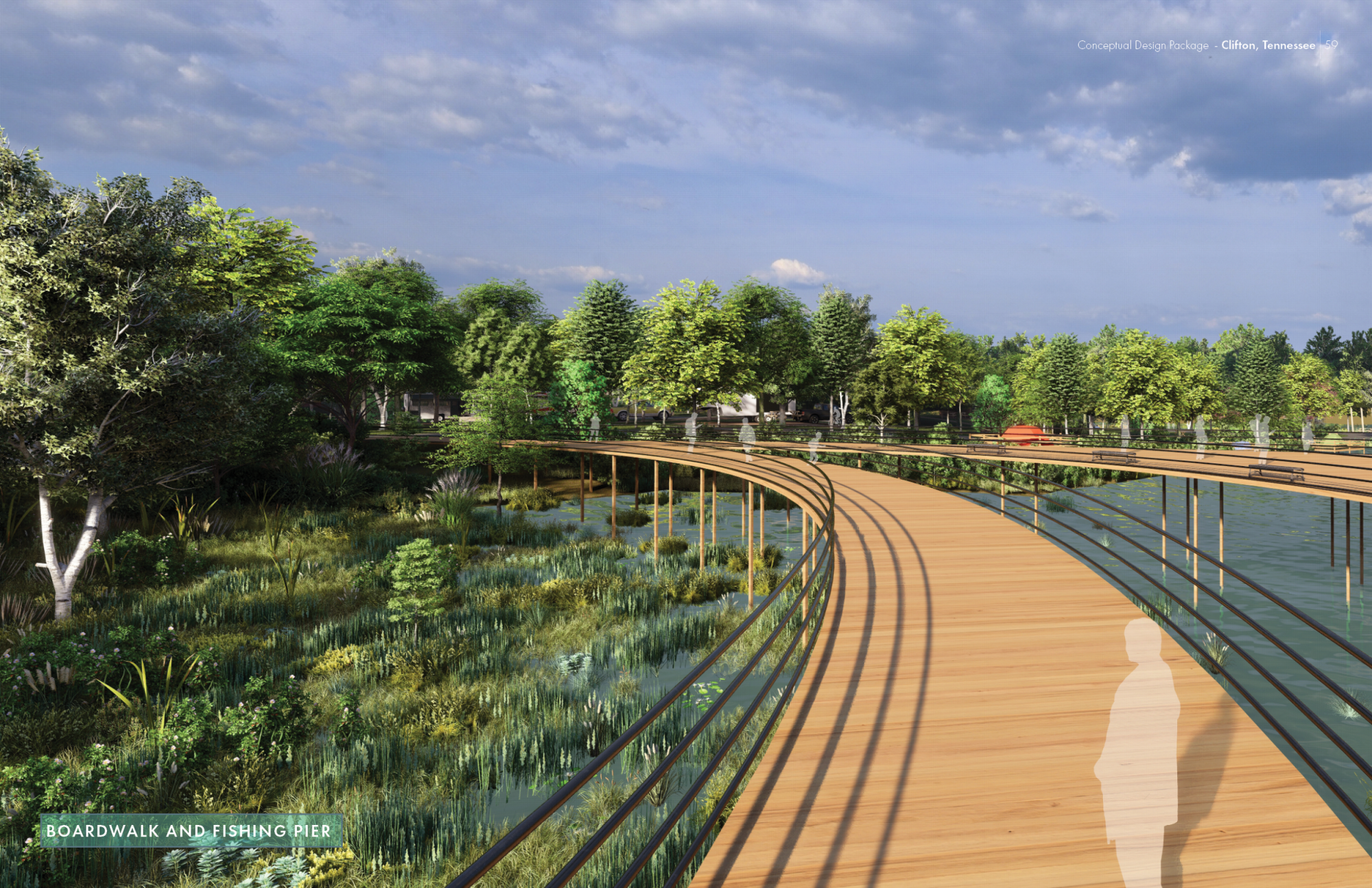
Osborne said this first phase was conducted not just by holding public meetings but also hiking, paddling, windshield tours of the area, and other community events.
"We got a sense of what each community’s opportunities and constraints are with the river,” he said. “From that, we developed a list of recommendations from a design and program standpoint that they could move forward with to improve their stretch of the river.”
Some communities, like Savannah and Kingston, already had existing facilities and infrastructure on the river while others, like Clifton, were starting from scratch with undeveloped land.
Rena Purdy, executive director of the Wayne County Joint Economic & Community Development Board (JECDB) said the stakeholder meetings and guidance from the RiverLine helped better connect Clifton residents of all walks of life who were interested in turning river access into a boost for the community.
“I think the greatest value has been the relationships formed and still growing among the partners,” Purdy said. “Locally, the RiverLine continues to bring together residents of all ages and backgrounds all along the RiverLine having a shared interest of protecting and promoting their communities and the Tennessee River. We've discovered areas that are primed for recreational development and have learned ways of becoming better stewards of our natural resources. Some people show up to our events out of curiosity but leave better informed of the Tennessee River's history, present state, and future potential.”
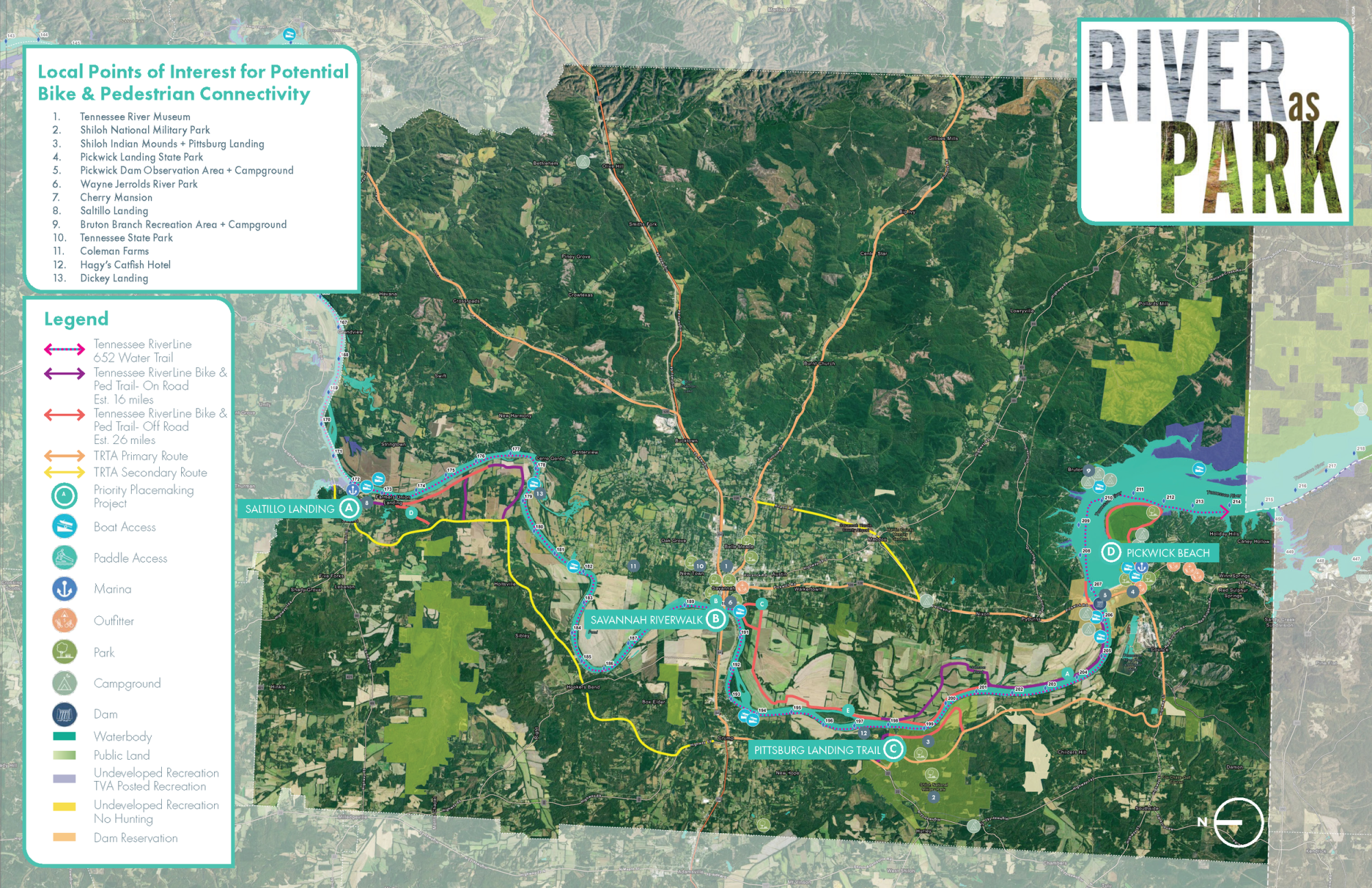
Lauren Whaley with the Hardin County Convention and Visitors Bureau said the process has helped municipalities like Saltillo and Savannah to take ownership of their relationship with the river.
“By participating in the Tennessee RiverLine program, people in our community have been given opportunities to experience the river and learn about its significance to our history and our future,” Whaley said. “We now host events throughout the year that allow all generations to learn about stewardship and different types of river recreation. Seeing some of these events become recurring and involving families who make an effort to return each year has really been encouraging. By participating in the Tennessee RiverLine and their 652 to You program, I believe many residents were given an opportunity to look at their relationship with the Tennessee River in a new way. It is so much more than just a place for recreation and commerce. It is our story.”
While each community had different design preferences and ideas about how the river could best be utilized in their communities, Osborne said many developed these designs based on similar core values. Goals like developing more paddling support and opportunities, connecting recreation on the river to other outdoor amenities, educational components, and connecting the river to economic centers were shared by each community.
While each project is unique, there are some overall pillars that we aspire to,” Osborne said. “Each of these projects have a role to play in economic development and improving quality of life and public health through the introduction of new outdoor recreation amenities. They are also breaking down barriers and providing equitable access to people who may not have the funds or ability to participate in recreational activities.”
CONCEPTUAL DESIGN
Based on this feedback, local leaders in each community began focusing on conceptual designs for projects that would meet their goals. With all the designers involved being landscape architects, Osborne said each design considers environmental stewardship of the river.
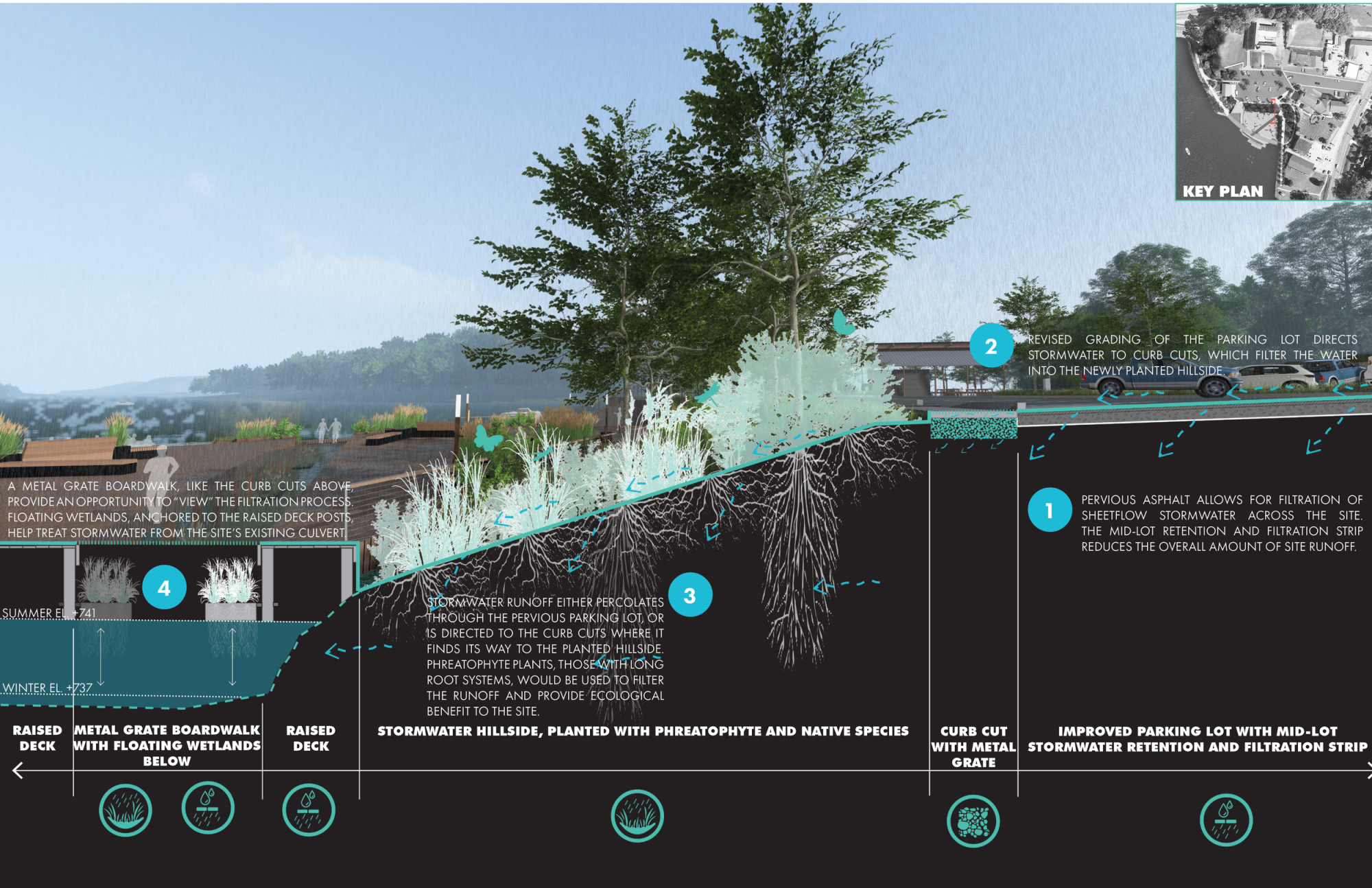
“Our hope is that as we get people out on the water we are really educating folks on the fragility of our river landscape,” he said. “In many cases, we incorporated interpretive signage and different elements to educate folks on their river landscape, either from a cultural or ecological perspective.”
Clifton’s project at Ross Creek Park will focus on providing river access for non-motorized users, establishing more camping and outdoor recreation opportunities, and celebrating, protection, and restoring local biodiversity. The project will build on the city’s Parks and Recreation Master Plan and has brought in partners including USDA, the Wayne County Joint Economic Development Board, Columbia State Community College, and TVA.
Purdy said the design phase has helped build excitement about Clifton’s future use of the river.
"When asked our thoughts on the designs created, one of Clifton's elected officials immediately replied ‘When do we start?’,” she said. “Every person that has attended a community stakeholder meeting, stewardship event, or paddle has expressed interest in seeing the vision come to life and have become more involved in the Tennessee RiverLine”
In Kingston, the project to enhance the Kingston Waterfront builds on an existing boat dock, parking area, and walking trails. Plans include adding kayak access, trails, picnicking, restrooms, and concessions. Other goals include cleaning stormwater run-off, and better connecting protecting the surrounding area, connecting existing amenities to downtown Kingston, and finding new opportunities to develop Watts Bar Lake and the Tennessee River as tourism assets.
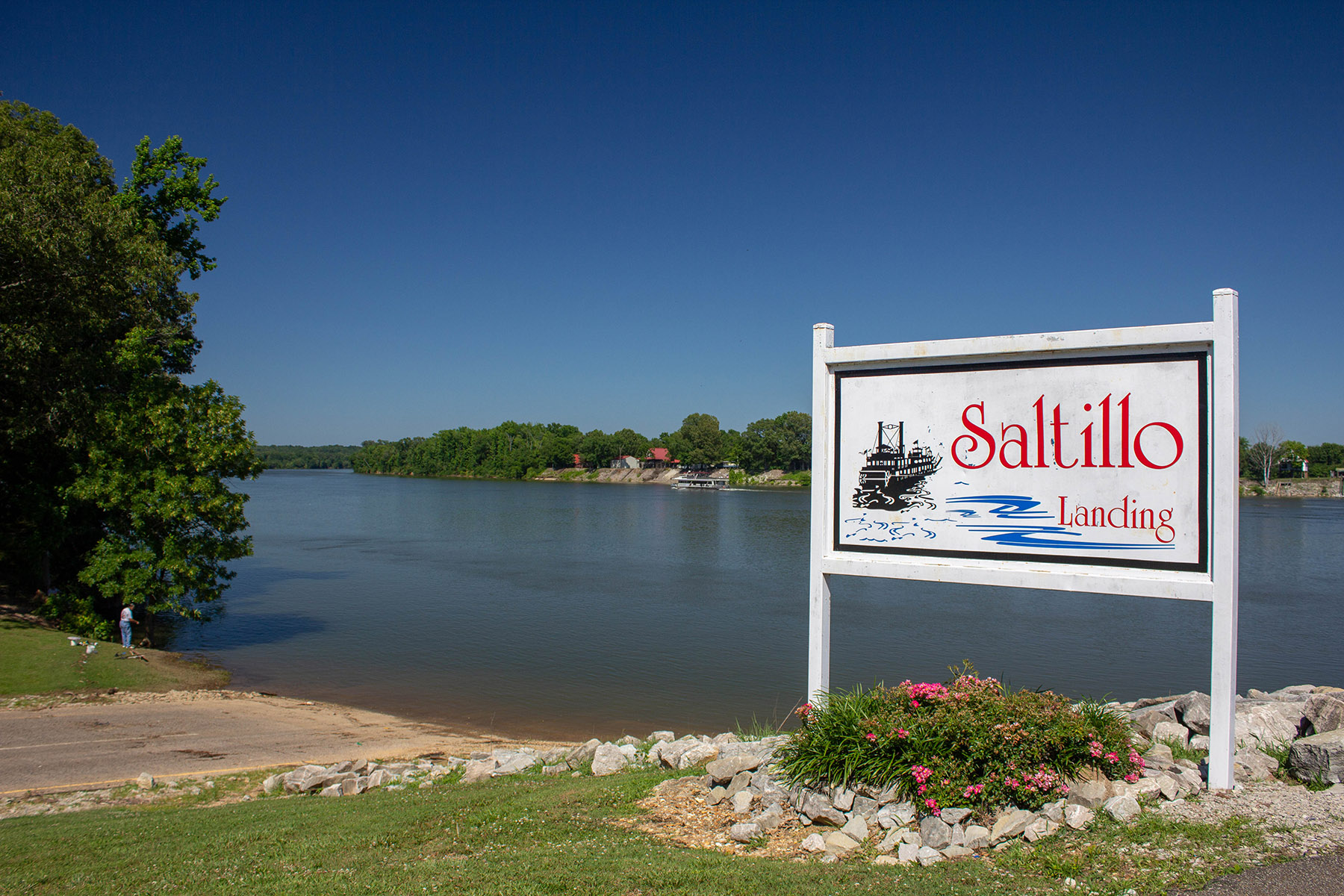
The Saltillo Landing and Savannah Riverwalk are two parts of the four-part project connecting river assets in Hardin County. The other two areas of focus are Pittsburg Landing and the beach at Pickwick State Park.
The site plan for the Saltillo Landing will renovate the boat ramp area to accommodate more vehicles and space for events, including a food truck plaza. A kayak launch and boat storage are also planned. A pavilion, riverfront seating, and playground will also be installed. The entire area will be connected to downtown Saltillo through sidewalks, providing a link between residents, businesses, and the river.
In Savannah, the project will connect a trail to the Cherry Mansion, the city’s Riverfront Boardwalk, and Wayne Jerrolds Park. Bike and pedestrian improvements will then connect these locations as well. A marina is planned for Wayne Jerrold Park with a future hotel site possible between the boardwalk and the park.
“I think the opportunity for us to eventually have riverside trails that tie our county together and tie us to the entirety of the Tennessee River’s 652 miles is exciting,” Whaley said. “While we all share the Tennessee River, our interactions and history with the river are unique to each community. The projects presented to us by the Tennessee RiverLine provide a chance to tell our stories as well as give people another way to enjoy the Tennessee River.”
One consideration of each plan is how others are already using the river in the area.
“In a lot of ways, the Tennessee River still plays a major role in power generation through the TVA and is also a very heavy transportation lane for industry, and so we want people to think of the river as a shared space,” Osborne said. “We want to make sure that people who go out in a kayak and canoe know this is also an area for motorized boaters and barge traffic. In areas where the river really narrows and industrial transportation is high, we may make suggestions that paddling occur in local tributaries or other, safer stretches of the river.”
FUTURE GOALS
The next phase for Clifton, Kingston, Saltillo, and Savannah is finding grant opportunities to move their designs into reality. Osborne said the RiverLine will continue to work with these communities to finalize design and construction plans as well as find grant dollars to cover these costs.

“We want to make sure that these projects are visible at the state legislative level, because the state help and be a driver of getting some of this infrastructure built,” he said. “Beyond that, it is up to the communities to take on the ownership of these projects to get them built.”
Purdy described the RiverLine as a “gamechanger” for Clifton and surrounding communities.
“Once the project identified for development at Ross Creek Inlet/Clifton Riverfront Park comes to fruition, it is sure to be an economic boom for Clifton,” she said. “It will create a welcoming environment for local residents and visitors to enjoy walking, biking, camping, fishing, kayaking, nature viewing, festivities, and more.”
Whaley said the project will help cities like Savannah and Saltillo build on existing assets.
“Through the creation of these riverside trails spread through our area, it will encourage people to get out and explore places they have never been before, learn new stories, and see the Tennessee River and our river towns from a new perspective,” she said. “These projects will benefit our county through increasing health benefits or both our local community and our visitors thanks to well-planned trails. We believe that we will also see an increase in economic development. While enjoying the river, we believe visitors will also chose to enjoy our local restaurants, stores, and year-round special events.”
These initial projects have also served as a pilot for the other projects currently in the works in municipalities along the Tennessee River.
“There are currently 22 communities enrolled in our RiverTowns program, which is the framework we use to go through the community engagement and design processes,” Osborne said. “We are currently working with Knoxville and Spring City to develop conceptual designs through the remainder of this year. Next year, the municipalities of Chattanooga, Dayton and Loudon, will join local governments in Meigs, Benton, and Perry counties as they move forward with conceptual designs. Over the next two years, we hope to have another seven or so Tennessee communities with conceptual designs for projects along the RiverLine.”
Osborne said the RiverLine has also been working in South Pittsburgh, who already had a conceptual design for a river park.
“They were ahead of the Community Planning Initiative project,” he said. “To date, they have been awarded about $1.5 million to get the first phase of that project started. They are making great strides in improving their stretch of the river.”
Ultimately, Osborne said the goal is to connect all these communities together via their projects.
“The Tennessee RiverLine is really the modern land-grant mission in action,” he said. “We are really striving to improve the quality of life for the people of Tennessee and the Tennessee River Valley.”

